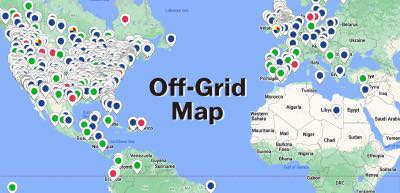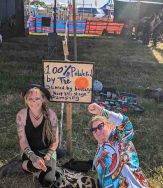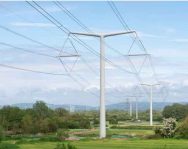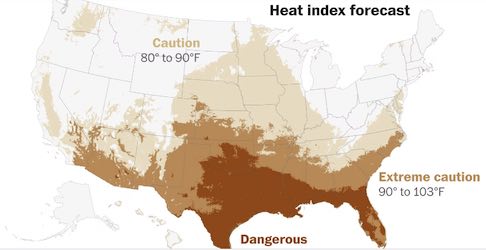 A massive dome over the western and southern United States has left Americans sweltering in soaring temperatures, poised to approach all-time records in Phoenix, Las Vegas and California’s Central Valley and surpass 130 degrees in Death Valley, Calif., the heat capital of the world. Excessive-heat watches cover 15 states from New Mexico, to Arizona and California, and Texas.
A massive dome over the western and southern United States has left Americans sweltering in soaring temperatures, poised to approach all-time records in Phoenix, Las Vegas and California’s Central Valley and surpass 130 degrees in Death Valley, Calif., the heat capital of the world. Excessive-heat watches cover 15 states from New Mexico, to Arizona and California, and Texas.
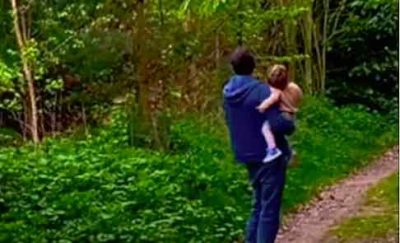
“I gave up normal life to live in my own wood – for £15,500”
A MAN who gave up his normal life to live off the grid with his family has revealed how – and why – he did it.
Fraser, his wife Rachael and their children Grace and Albie stay in a patch of woodlands in Lancashire, UK. But the 4.5 acres of land was bare when Fraser managed to pull £15,500 together to buy it 18 years ago.
Fraser said: “Holding out for that perfect piece of land isn’t always feasible because there’s always someone there with a larger wallet than you – get something you can afford.
“Plant trees as quickly as you can, because it’s going to take a long time, then make it your paradise.”
He’s now living the dream after building a completely off-the-grid life for him and his young family. The dad-of-two says he was just 22 and living at home in council housing when he scraped the money together – and hasn’t looked back since.
He’s left behind the noisy neighbours and ended up running his own YouTube channel named The Off Grid Family, encouraging others to take the leap, too.
Recalling almost 20 years ago, Fraser said: “I was living at home, living on a council housing estate. The area was a bit rough, and you’ve got noisy neighbours and all those things that come with it.”
He said house prices were through the roof – even for back then – so he started up a business in tree surgery to try get some funds together.
Fraser continued: “My passion was growing trees and having nature around me. You couldn’t get a mortgage for land. I had to get a personal loan. The land was £15,500 for 4.5 acres – it was an awful lot of money for me.
“The only way I managed to do it really was because I was still living at home. There was no inheritance and there was no trust fund.
“People think you can’t get this without help… you can. I went to work and in the beginning was working six days a week.”
At the beginning he just planted trees on the land and used it as storage – which is called “agroforestry”.
He’s since planted thousands of trees, a massive bar, solar and water filtration system.
Fraser said: “It’s been a massive undertaking. We’re completely off the grid. We’ve got a family now living here and I suppose it’s called the good life. They’re quite fortunate really, we’ve broken the cycle, they’re not going to be on a housing estate, which is brilliant.”…
